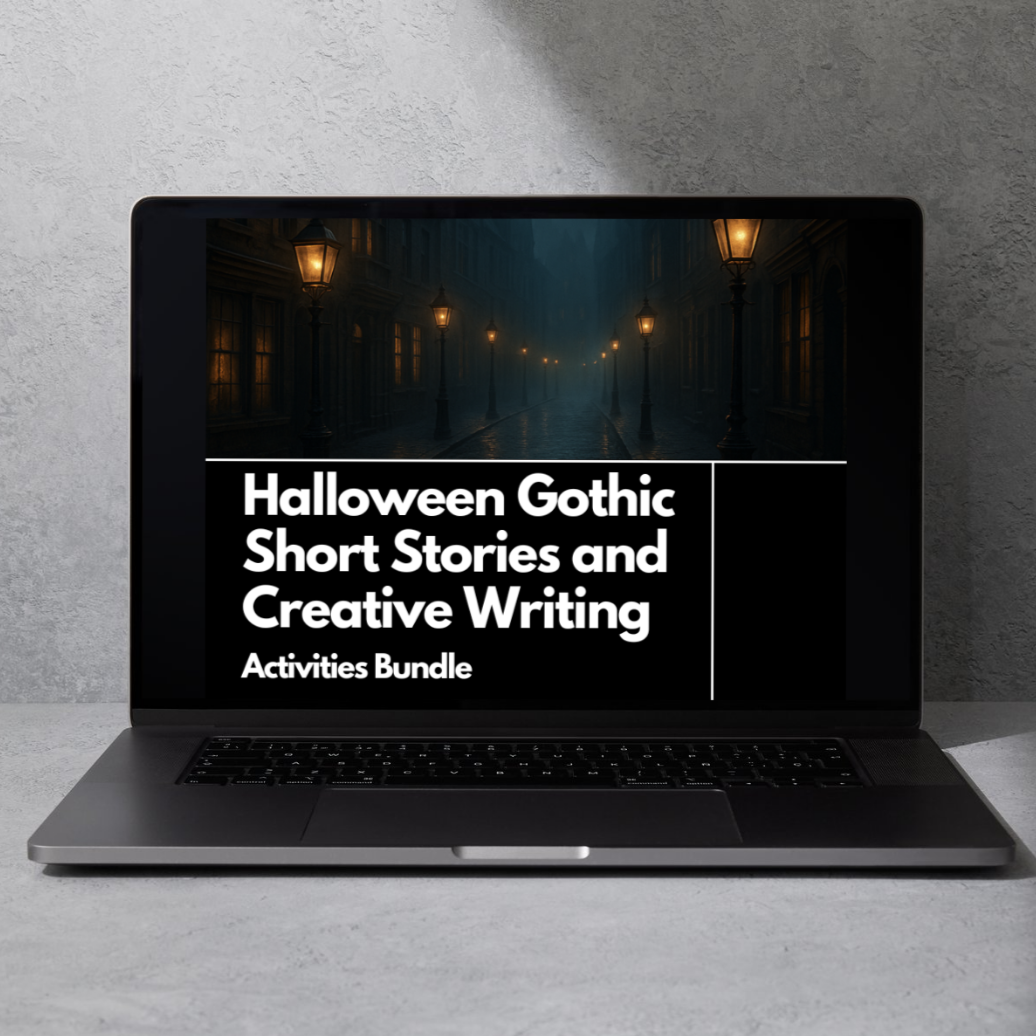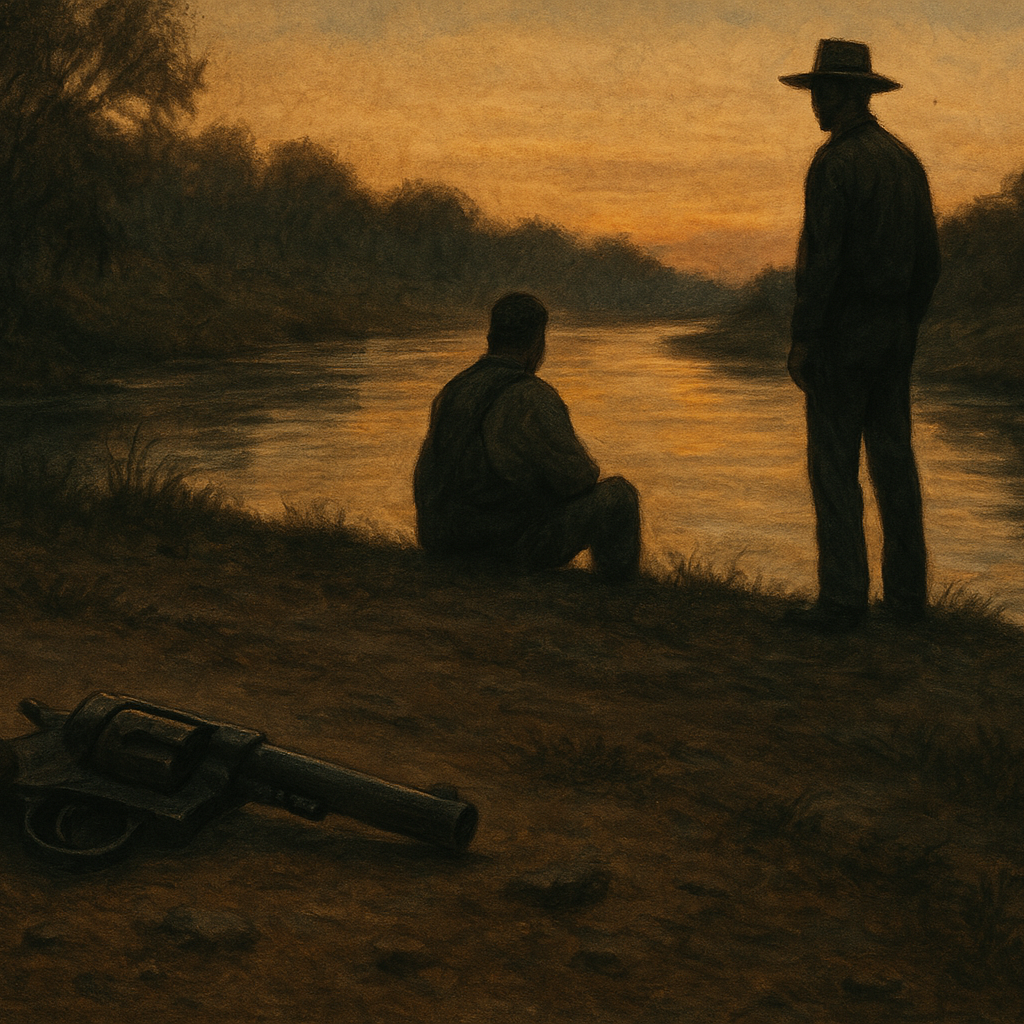Notes from the Inkpot
Writing, teaching, creating - one ink-stained idea at a time.

Halloween Gothic Short Stories & Creative Writing Bundle: Teach Analysis and Imagination in One Go
Looking for ready-to-go Halloween ELA activities? This Gothic short story and creative writing bundle is perfect for middle and high school lesson plans. Explore The Tell-Tale Heart, The Fall of the House of Usher, and The Monkey’s Paw with complete activities, then let students create their own eerie narratives through the Victoriana Creative Writing Mystery Box. A time-saving, engaging way to combine analysis and imagination this October.

10 Best Edgar Allan Poe Stories to Teach (And How to Teach Them)
Spooky season is the perfect time to teach Edgar Allan Poe. From The Tell-Tale Heart to The Masque of the Red Death, his stories and poems hook students with Gothic atmosphere, unreliable narrators, and detective intrigue. This list highlights the 10 best Poe texts to teach — with ready-to-use resources, activities, and creative ideas to bring them alive in your classroom.

10 Best WWI Poems to Teach (And How to Teach Them)
WWI poetry captures the shift from patriotic idealism to the brutal realities of the front line. These ten poems — from Owen’s haunting Dulce et Decorum Est to Rosenberg’s symbolic Break of Day in the Trenches — bring history, empathy, and powerful language into the classroom. Here’s why they’re worth teaching and how to make them resonate with your students.

Why I Swear by Picture Prompts for Teaching Literature (And How to Use Them)
Picture prompts aren’t just for creative writing units — they can transform the way students connect with literature. Whether you use them to spark predictions before reading or to inspire a fresh take after finishing a text, the right image can flip the switch from passive reader to active thinker. Here’s how I use picture prompts to teach language through literature, keep lessons fresh, and make analysis feel less like a chore.

Why Silent Debates Might Be the Best Thing I Ever Did in an English Classroom
Looking for a way to boost engagement, build argument skills, and get every student involved in discussion, even the shy ones? Silent debates might just be your new favourite tool. In this post, I break down how I use them in my English classroom (both in-person and online), why they work so well, and how you can start using them right away. Includes tips, examples, and free resources for texts like Macbeth, Romeo and Juliet, Of Mice and Men, and more.

Why I Still Teach Of Mice and Men in 2025
It’s been taught a thousand times, and for good reason. This novella still silences a room, sparks debate, and gets students thinking deeply about morality, loneliness, and power. In this post, I share how I teach it, the moments that always hit hardest, and why it’s still one of the most powerful texts in my classroom.

Save Hours Planning Creative Writing Units with Daily Prompts
Tired of reinventing the wheel for every creative writing lesson? Daily prompts offer a flexible, low-prep way to boost engagement, sharpen skills, and save you hours of planning. Here's how to build an entire unit around them, and where to grab your first month of prompts for free.

How to Teach All Summer in a Day (Including Discussion Ideas & Creative Writing Activities)
Explore how to teach Ray Bradbury’s “All Summer in a Day” with meaningful discussions, tension-mapping, and creative writing tasks. This post shares classroom ideas, writing prompts, and ready-to-use resources to help students connect deeply with Margot’s story of isolation, empathy, and missed sunlight.

Why Macbeth Is the Only Shakespeare Play I’ll Never Get Sick Of
I’ve taught Macbeth more times than I can count, and somehow, I still look forward to it. There’s just something about the witches, the guilt, the madness. In this post, I’m sharing why Macbeth is the one Shakespeare play I’ll never get sick of—plus some of my favourite creative writing tasks and classroom stories along the way.

7 Free English Classroom Resources I Actually Use (And Still Love)
Seven free English teaching resources I’ve actually used in real classrooms. From creative writing prompts to post-reading tasks, these are my go-to freebies that still hold up, and they’re all ready to download.

The Ashridge Collection: A Free Creative Writing Resource for Curious Students and Tired Teachers
Tired of worksheets? The Ashridge Collection is a free printable creative writing mystery designed for curious classrooms. Built from letters, diary entries, and eerie school documents, it invites students to step into a story, and shape it themselves.

What Writing Taught Me About My Own Emotions (And How It Can Help Students Too)
Writing has always helped me untangle what’s going on in my own head, and it can do the same for students. In this post, I’m sharing how I teach personal narrative early in the year, why it’s linked to SEL, and how writing has helped me understand myself better.

How to Teach English Language Skills Using Literature Texts (Free Prompts Included)
Combine language and literature in a meaningful way with chapter-by-chapter creative writing prompts. This post explores how you can build writing skills while deepening students’ understanding of the texts you teach - plus, you’ll find lots of free resources to download and try right away.

Teaching 1984: Activities, Experiments, and Real-World Connections
Teaching 1984 isn’t just about exploring a dystopian novel, it’s about showing students how power, control, and surveillance shape the world around them. In this post, I’m sharing how a real-world classroom experiment helped my students experience Orwell’s warnings firsthand, plus practical strategies for breaking down the novel’s complex themes in an engaging, accessible way.

Why Ray Bradbury Is the Original Black Mirror (and How to Teach Both in the Classroom)
Ray Bradbury might not have predicted Instagram likes or parental control implants, but his stories hold up like eerie reflections of our own tech-obsessed world. In this post, I pair classic Bradbury short stories with Black Mirror episodes to explore how both challenge our ideas about progress, power, and humanity. Perfect for teachers looking to spark meaningful discussions in the classroom.

Famous First Lines as Writing Prompts: How to Spark Creativity Without Reinventing the Wheel
First lines are where everything begins -and for writers, they’re often the hardest part. That pressure to hook the reader immediately can be overwhelming. That’s exactly why I started collecting real first lines from published novels.
I use these with students to take the pressure off. Instead of staring at a blank screen, they start with something brilliant and build from there. It gives them structure and freedom all at once. It’s a reminder that writing isn’t about perfection. It’s about momentum.
Some lines are eerie. Some are emotional. Some are bold, jarring, or just weird enough to make you lean in. But the best ones all do the same thing: they open a door.
And that’s what these prompts are about. Opening the door, so the story can step through.

Why I Swapped Traditional Discussion Questions for Roll-the-Dice Boards - And Never Looked Back
Tired of classroom discussions that fall flat? I was too - until I swapped traditional comprehension questions for a simple roll-the-dice game that completely transformed the way my students talk about literature. These boards turn discussion into something engaging, student-led, and genuinely thought-provoking. Here’s how I use them, why they work, and how you can try them in your classroom too.

100 Creative Writing Prompts Sorted by Genre: A Go-To List for Students & Teachers
Struggling to get words on the page? These 100 creative writing prompts are here to help. Sorted by genre and perfect for teens, this list is your go-to resource for sparking ideas, building writing confidence, and banishing writer’s block—whether you're teaching, journaling, or working on your next big story.

Why I Still Teach Romeo and Juliet (Even Though I Hate It)
I’ve taught Romeo and Juliet for over a decade—and I still hate it. But that’s exactly why it works. Here’s how I use student debates, modern rewrites, and creative twists to turn eye-rolls into engagement (and yes, we watch the Leo version).

The Power of Daily Writing Prompts in the Classroom
What if your students didn’t freeze every time they had to write? Here’s how daily writing prompts helped mine go from “I don’t know what to write” to confident, creative thinkers - and how you can do the same.